|
Activism And The School Librarian : Tools For Advocacy And Survival Deborah D. Levitov, editor In a time when school budgets are shrinking and library programs are at risk comes this guide designed to help school librarians deepen their influence within the community. Interestingly, Levitov and company recommend a librarian start by examining his or her own weaknesses as they develop an advocacy plan. The big question they put forth is: Why is the voice of the librarian not enough? In one chapter, Debra Kachel, Margaux DelGuidice, and Rose Luna note that problems get the most attention in schools, and libraries seldom are perceived as problems. Some librarians, they say, accept their role as peripheral rather than integral. There is useful information here, like the example of a librarian who reached out to alumni of her school and brought in the surrounding community. There is also a virtual step-by-step how-to guide to approach state and federal legislators for support, including what not to do and what to realistically expect in terms of time. These could be refreshers for veteran advocates, or spark inspiration for those brand new to the job and wondering which way to turn. The earliest chapters are clunky and chunky, full of words meant to impress academics while defending a thesis, although this may not be a fair criticism for what essentially amounts to a textbook. The book is easier going once into the true heart of the matter: finding new champions for school libraries wherever they may be. 2012, Libraries Unlimited, $45. Ages adult professional. REVIEWER: Matthew Weaver (VOYA). ISBN: 9781610691871 |
|
 |
Assessing Learning: Librarians and Teachers as Partners Violet Harada and Joan M. Yoshina When school library media specialists and teachers work as partners, students benefit. Harada (library and information science) and Yoshino (Hawaii Department of Education, retired) give practical advice on assessment as a function of the library media center, tools such as checklists, rubrics, rating scales, conferences, logs, graphic organizers and personal contact, beginning assessment with the end in mind, using student portfolios, including electronic versions, and communicating evidence of learning. They provide additional readings for topics in each chapter, sample profiles, and models for lessons and learning experiences. Annotation (c)2005 Book News, Inc., Portland, OR (booknews.com) 2005, Libraries Unlimited, 149pp, $40.00. Ages: Adult professional REVIEWER: Book News (Book News Reference). ISBN: 9781591582007 |
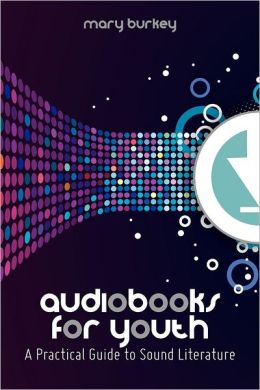 |
Audiobooks For Youth : A Practical Guide To Sound Literature Mary Burkey Good things do indeed come in small packages and Mary Burkey’s splendid little volume, Audiobooks For Youth, proves that adage admirably. From a fascinating historical overview of the medium, through a lucid explanation of the many-faceted process of producing audiobooks, to predictions about the changing digital environment and its impact on libraries, the author offers an essential handbook for librarians serving young people. She clearly explains how listening to audiobooks not only benefits the struggling reader, but also offers new conduits to books for avid readers. Additionally, Burkey utilizes current research to show how audiobooks can help meet guidelines for literacy education. Her concrete suggestions on locating, selecting, and acquiring essential audiobooks will be especially valuable for librarians and media specialists seeking to grow a viable listening collection for today’s “born digital” generation. Fascinating explanations, reflections, and comments from award-winning authors, audiobook producers, narrators, reviewers, and librarians, including Jack Gantos, David Rapkin, Katherine Kellgren, Joyce G. Saricks, and Dr. Teri S. Lesesne, further serve to delight and inform readers. In addition, useful appendices reprint the author’s handy “Audiobook Lexicon,” and provide timely and comprehensive suggestions for further reading. A model of concise and lucid writing, this informative and entertaining handbook is an essential purchase for all libraries and media centers. 2012, American Library Association, Ages adult professional, $45. . REVIEWER: Jamie Hansen (VOYA). ISBN: 9780838911570 |
 |
Beyond the Five-paragraph Essay Kimberley Hill Campbell Written by experienced teachers, this title is a must-have for every school and library serving teachers or preservice teachers. Campbell and Latimer have created a practical nuts-and-bolts guide to teaching students to write and think critically about literature and life. To teach students to articulate a claim and support it (a skill emphasized in the Common Core State Standards), the authors state, “Literature is our vehicle, essentially, for teaching students this crucial aspect of critical thinking.” For any teacher attempting to move beyond the structure and limitations of the five-paragraph essay so commonly found in classrooms and on tests, there are plenty of details, including sample assignments, forms, and questions to help them along the way. For those who have already been successful in their attempts, this title is valuable for the exceptional lists of mentor texts, from essays to six-word memoirs, eulogies, and more. There is also enough research cited to convince administrators and other critics how important it is to prioritize the writing process over its structure. The authors discuss in detail how to help students understand how to wrestle with a text–to write and respond to their own individual reactions to the text rather than simply formulate an “arguable” thesis and support it. They understand the additional time required to teach this way and fully defend the process, even providing simplified methods of grading and assessment. Campbell and Latimer are passionate about students understanding and appreciating literature as their mentor and inspiration, and “discover[ing] that they, too, are writers.” 2012, Stenhouse, Ages adult professional, $22.50. REVIEWER: Rochelle Garfinkel (VOYA) ISBN: 9781571108524 |
 |
The Book Whisperer : Awakening The Inner Reader In Every Child Donalyn Miller From the Publisher: “Miller provides many tips for teachers and parents and includes a useful list of ultimate reading suggestions picked by her students. This outstanding contribution to the literature is highly recommended for teachers, parents, and others serving young students.”—-Library Journal Starred Review. 2009, Josey-Basse, $24.95 ISBN: 9780470372272 |
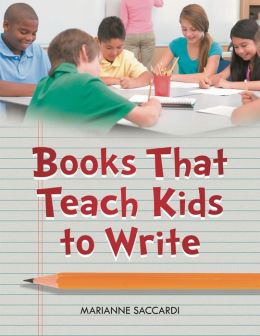 |
Books That Teach Kids to Write Marianne, Saccardi This is an outstanding and very practical reference work for elementary and middle school librarians and teachers, as well as parents. Marianne Saccardi’s book is useful on several levels. She analyzes skills students need to be effective writers of both fiction and nonfiction, such as developing details and character, and making writing unique and alive with passion. She reviews and analyzes these books in depth and recommends scores of books that illustrate the writing characteristic discussed. Saccardi also presents shorter reviews of hundreds of ageappropriate books. A librarian or teacher armed with a highlighter would have a wonderful time selecting books to order. These books include suggestions for classroom use. Virtually all reviewed books are recent and up to date on multicultural themes, as well as issues affecting children. As a person who has taken several writing courses, I found her suggestions relevant and interesting. I particularly liked her idea of writing a descriptive biography of a character even before putting that character into the story. Ms. Saccardi is to be complimented for her emphasis on improving nonfiction writing and providing useful tips on how to do that. The book contains two excellent appendices, one containing great reproducibles for writing exercises and the other a bibliography of books about characters who write. Both appendices will encourage creativity and an interest in writing among students. Any teacher or librarian will be set for book-ordering for the next ten years with this wonderful reference and writing guide by an author who loves children’s books and knows her stuff! 2011, Libraries Unlimited/ABC-CLIO, Ages adult professional, $30.00. REVIEWER: Rick Sirvint (Catholic Library World). ISBN: 781598844511 |
 |
Children’s Literature in the Reading Program: An Invitation to Read Edited by Deborah A. Wooten & Bernice E. Cullinan The second part of the title of this book is the most important part. Reading is more than a skill that teachers must impart to their students, it is also a habit that the students should develop–must develop, really, if they want to achieve academic success after high school. Developing the habit requires that they be given both the literature to read and the opportunity to read it. Teachers must advocate for time to read so that students develop that habit and they must keep good literature available for students to use when there is time to read. Each chapter in the book is authored by different experts, all of whom offer an arsenal of good ideas for teachers to use to both create opportunities for students to read, and make literature choices that will interest and engage the students. The first section of the book deals with genre studies, with particular emphasis on genres that have gained attention and popularity in recent years, such as graphic novels and postmodern picture books. The chapters in the first part of the book include suggestions for incorporating the various genres discussed in classroom activities as well as a list of suggested titles within the genre. The second section of the book is practical in nature, discussing means of incorporating literature into every part of the curriculum, and offering additional lists of suggested titles for each subject area. There are three indexes at the end of the book: one by subject, one by title, and one by authors’ names. This should be required reading for all pre-service education students as well as for all classroom teachers. 2009, International Reading Association, Ages Adult, $26.95. REVIEWER: Ellen Welty (Children’s Literature). ISBN: 9780872076990 |
 |
Choice Words: How Our Language Affects Children’s Learning Peter H. Johnston Johnston (education, State University of New York-Albany) shows how elementary teachers can build emotionally and relationally healthy learning communities in the classroom through language. He provides examples of ordinary words, phrases, and uses of language that encourage students to become strategic thinkers and acquire literacy skills. His explanations of the significance of these examples draws on the disciplines of discursive psychology, narrative psychology, discourse analysis, and conversational analysis. Annotation (c)2004 Book News, Inc., Portland, OR (booknews.com) 2004, Stenhouse Publishers, 106pp, $11.00. Ages: Adult professional REVIEWER: Book News (Book News Reference). ISBN: 1571103899 |
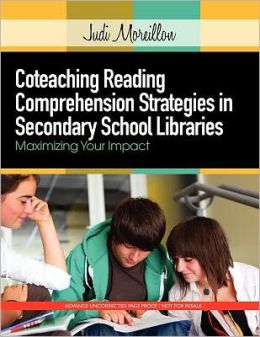 |
Coteaching Reading Comprehension Strategies In Secondary School Libraries : Maximizing Your Impact Judy Moreillon Teaching reading to secondary students that should already know how to read is a daunting task. Many secondary librarians do not even come from an English or reading background, making it even harder to aid in this area. Moreillon writes about how and why librarians need to maximize their impact on their school through working with classroom teachers and weighing in on the curriculum taught in the classroom. The main way to do that is through the coteaching of reading. This text outlines seven reading strategies that are essential to teaching reading and gives step-by-step instructions on their implementation. The author breaks it down into easy mini-lessons. This is meant to help librarians get into the mainstream of teaching and help their colleagues succeed at an even higher rate. This text is meant to be used by preservice or new librarians and teachers to aid them in instructional practices. There are also additional online resources (http://www.alaeditions.org/webextras/). This is a wonderful text that aims at getting the secondary librarian back into hands-on instruction with brilliant time-tested strategies that can be used with any text at any time. 2012, American Library Association, Ages adult professional, $50. REVIEWER: Barbara Allen (VOYA). ISBN: 9780838910887 |
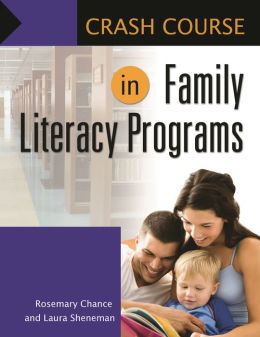 |
Crash Course in Family Literacy Programs Rosemary Chance Annotation: “This book collects the research on literacy, information regarding the importance of reading to children, sources of funding, and places to find information about literacy programs in the 50 states–all in a single volume”— 2012, Libraries Unlimited, $35.00. ISBN: 9781598848885 |
 |
Going with the Flow: How to Engage Boys (and Girls) in Their Literacy Learning Michael W. Smith, Jeffrey D. Wilhelm Smith and Wilhelm are best known as the authors of “Reading Don’t Fix No Chevys” (Heinemann, 2002/VOYA August 2002), a discussion of boys’ literacy habits. Here the authors expand their discussion and offer a number of strategies for teaching and assessing all students’ reading and writing. Smith and Wilhelm theorize that students who associate reading with what Csikszentmihalyi calls “flow experiences”-which occur when participants feel competent and in control of the experience, can identify an immediate application to their reading, and have clear goals and opportunities to receive feedback about their reading-are those who become skilled and avid readers. Additionally they emphasize the social nature of reading and argue that teachers would do well to capitalize on this aspect of the experience. In each chapter, the writers attack aspects of the flow experience and offer pedagogical strategies to teachers interested in making reading “flow” in the classroom. Sample lesson plans, worksheets, and activities are provided throughout the text, as the authors draw liberally from their own teaching experiences to provide examples of practice. Although this book would not necessarily inform the practice of public librarians, it definitely speaks to an audience of English and Language Arts teachers and school media specialists. Throughout the book, Smith and Wilhelm urge teachers to rid themselves of the notion of teaching as “habitus” (following the work of Pierre Bourdieu and defined by the authors as “the commonsense notion that the way things are is just the way they have to be”) and work to make lessons and classroom experiences relevant to students. They make a convincing argument against the high-stakes testing principles of No Child Left Behind and successfully support these claims with research and teaching strategies that are certain to motivate even the most “habitual” educator. 2006, Ages adult professional, Heinemann, $21. REVIEWER: Amy S. Pattee (VOYA). ISBN: 9780325006437 |
|
Growing Schools: Librarians as Professional Developers Debbie Abilock, Kristin Fontichiaro, and Violet H. Harada, editors In this age of cuts to school library services concomitant with education reform, editors Abilock, Fontichiaro, and Harada examine ways school librarians can act as professional developers within their pedagogical communities. Thirty-two articles in sixteen thematic chapters offer real-world examples of how teacher librarians have leveraged their skills and expertise to provide learning experiences for other teachers, community members, and students. Examples include using play to introduce new technology tools to teachers during built-in professional development times; increasing capacity for assessment and research through practice; and building and strengthening learning communities through professional development. The essays walk the reader step by step through the planning, implementation, and analysis of each project or program, making them excellent tools for teacher librarians or administrators looking to implement their own projects. Unfortunately, replication may be easier said than done since so many of the projects had significant resources supporting them–something that will not be possible in many schools. While teacher librarians interested in becoming more active in designing and leading their schools’ professional development will find a host of ideas here, they may also be discouraged by the privilege behind some of the projects. A number of small copy-editing mistakes throughout the book mar the overall impact, but schools or districts looking to revamp or increase in-house professional development should find this an interesting place to start. 2012, Libraries Unlimited, Ages adult professional, $45. REVIEWER: Vikki Terrile (VOYA). ISBN: 9781610690416 |
|
 |
Keep It Simple: A Guide to Assistive Technologies Ravonne A. Green Annotatotion: “Background — Equipment — Accessibility issues — Universal access — Staff training — Assistive technology and disability services marketing. 2011, Libraries Unlimited, $50. ISBN: 9781591588665 |
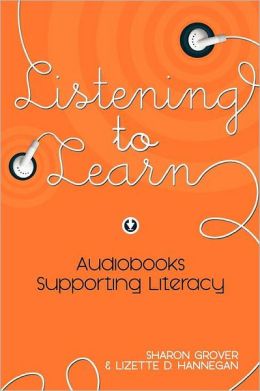 |
Listening to Learn: Audiobooks Supporting Literacy Sharon Grover and Lizette D. Hannegan Two experienced librarians join together to produce this very useful book to help librarians, teachers, and parents increase young people’s literacy skills. They present audiobooks as another tool in the K-12 classroom, library, and home to reinforce standards and serve as a motivating force to get students to read more. Grover and Hannegan have traced the history of audiobooks and provide guidelines for collection development. They also suggest ways to display and circulate audiobooks. Thematic lists of carefully selected titles and ready-to-use ideas for classrooms, libraries, and homes are included. This is a title that could be useful to many who are interested in increasing literacy skills utilizing audiobooks. 2012, American Library Association, Ages adult professional, $55.00 ISBN: 9780838911075 |
 |
Organizational Storytelling For Librarians : Using Stories For Effective Leadership Kate Marek Many strong leaders use the art of storytelling to bridge gaps and convey messages. This professional offering teaches librarians to use storytelling as an effective leadership tool. The chapter titles chart a clear progression through the topic. In “Storytelling Retooled,” Marek introduces the topic and shares personal experiences with storytelling in the workplace. Subsequent chapters flesh out further details. “Communicating Vision and Values” provides insight on using stories to link personal and shared values to the organization. “Using Stories to Navigate Change” yields tips and examples on using storytelling to both create and manage change within an organization. “Using Stories to Build Community” addresses using stories to position the library as a cornerstone of the community. “Telling Stories Through Buildings” introduces the concept of architecture as an organizational storyteller. This chapter looks at four library renovations as communicators of shared values and goals. The final chapter, “Developing the Skill Set,” provides concrete techniques and ideas for effective organizational storytelling. Marek has written a clear and thorough introduction to organizational storytelling for librarians. Carefully researched, the book includes notes at the end of each chapter. A comprehensive resource list encourages further study. Controlling one’s own story and the story of one’s library is a useful skill, especially during times of budgetary turbulence. Individual librarians and library leaders need to be able to convey personal and shared values effectively; this title provides a wealth of information on the topic. 2011, American Library Association, Ages adult professional, $50. REVIEWER: Amy Fiske (VOYA). ISBN: 9780838910795 |
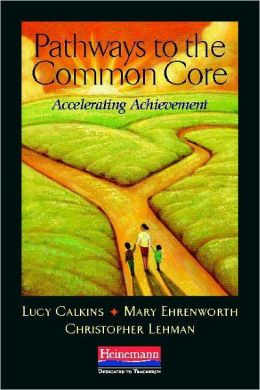 |
Pathways to the Common Core: Accelerating Achievement Lucy Calkins, Mary Ehrenworth, and Christopher Lehman Contents: An introduction to the common core state standards — Overview of the reading standards: What do they say and what does this mean for us? — Literal understanding and text complexity: Standards 1 and 10 — Reading literature: Standards 2-9 — Reading informational texts: Standards 2-9 — Overview of the writing standards: What do they say and what does this mean for us? — The CCSS and composing narrative texts — The CCSS and composing argument texts — The CCSS and composing informational texts — Overview of the speaking and listening and the language standards: What do they say and what does this mean for us? — CCSS-Aligned assessments fuel whole-school reform. 2012, Heinemann, $33.00. ISBN: 9780325043555 |
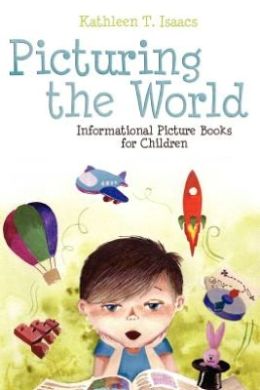 |
Picturing the World: Informational Picture Books for Children Kathleen T. Isaacs The assortment of informational books for children is continually expanding, especially now that the Common Core State Standards specifically address skills related to informational text. Kathleen Issacs’s Picturing the World is a remarkable resource for librarians and teachers who are looking for the very best informational books for their students. The book begins by defining the subject; Isaacs applies a rather broad definition of the genre which includes picture books which may be fictional in nature, but contain valid informational content. The 250 books annotated in this book are targeted at readers age three to ten, and selected considering quality of information, writing, and illustrations which work to expand the text. Choosing a wide variety of topics, Isaacs considered subject and child appeal, accuracy, sources, and book awards. The bulk of the book consists of annotations of informational picture books, subdivided into categories including home and school, natural world, the world we make, things we do, faith and festivals, and history and the world today. The appendix includes a list of awards mentioned in the annotations. Subject, author/ illustrator and title indices make the book easily accessible. The annotations include not only the basics (author, publisher, ISBN, etc.) but also appropriate age range. She writes one substantial paragraph per book, engaging the reader in the first sentence with an interesting fact or overall summary–describing not only the content, but also writing style. The reader can easily imagine the book based on her descriptions. Isaacs does not overlook parts of the books that the author may be disappointed about–layout, web links which are no longer valid or additional information which may be lacking. Despite the flaws in some selections, these titles are clearly the best in their categories. Picturing the World will help librarians and teachers address curriculum needs beyond the textbook with high quality, informational picture books. 2013, ALA, Ages adult professional, $50.00. REVIEWER: Kristine Wildner (Catholic Library World). ISBN: 9780838911266 |
 |
Q Tasks: How to Empower Students to Ask Questions and Care about Answers Carol Koechlin This teacher resource shows teachers how to develop a questioning culture among students thereby helping students to become critical thinkers and users of information, ask real questions that focus on personal understanding and give them ownership of their learning experience. Content includes such tasks as encouraging curiosity, understanding questions and questioning techniques, evaluating the reliability of information, analyzing personal issues and setting realistic goals, exploring scientific and mathematical concepts and testing new ideas. These tasks are designed to cultivate curiosity and imagination and encourage students to ask their own questions. The various classroom activities, worksheets, projects, curriculum contexts and evaluation techniques provide teachers with a rich array of resources to teach the specific skills and attributes that students need to become effective questioners. Includes a Resource list of selected resources. This should be a useful resource for those teachers committed to developing questioning in students as they learn to think critically and creatively. Recommended. Category: Professional Resources. Thematic Links: Critical Thinking – Study and Teaching (Elementary); Creative Thinking – Study and Teaching (Elementary). Resource Links Rating: G (Good, great at times, generally useful!) 2006, Pembroke Publishers, Ages adult professional, $24.95. REVIEWER: C. Lyn Currie (Resource Links). ISBN: 9781551381978 |
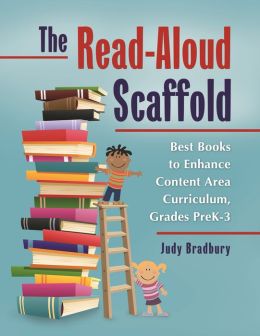 |
The Read-Aloud Scaffold: Best Books to Enhance Content Area Curriculum, Grades Pre-K-3 Judy Bradbury Annotation: “”This compendium of outstanding read-aloud choices for grades pre-K-3 will enrich and extend content area instruction, helping busy teachers to meet curriculum requirements within the confines of their busy schedules” ISBN: 9781598846843 |
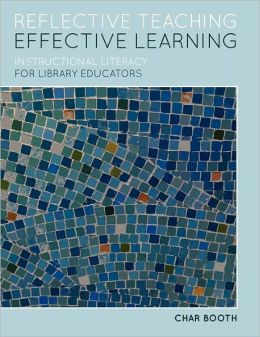 |
Reflective Teaching, Effective Learning : Instructional Literacy For Library Educators Char Booth If I was called to librarianship, I was thrown into teaching.” So begins the introductory chapter of this exceptional guide to teaching in the library environment, and for so many of us, truer words were never spoken. Teaching is frequently an afterthought in library education programs, and it can be frustrating and demoralizing to face classes–whether virtual or in person–feeling that one lacks the knowledge and confidence to teach effectively. And while this book is a godsend to novice teachers, even seasoned practitioners who are looking for fresh approaches will benefit from its guidance. What readers will not find here: canned lesson plans, scripted tutorials, or step-by-step activities. What they will find: an in-depth discussion of every aspect of instructional literacy combined with a set of strategies that will help librarians create effective instruction that can be adapted for any type of situation, be it a quick online tutorial or a full semester class. Each brief chapter ends with a summary and reflection points. The author includes planning templates, recommendations for further reading that are current and comprehensive, and a glossary of key terms. Although this book is targeted to academic librarians, it will be a valuable professional resource for librarians in any setting who want to continuously challenge themselves to create engaging and effective learning experiences. 2011, ALA Editions, Ages adult professional, $60 . REVIEWER: Jane Harper (VOYA). ISBN: 9780838910528 |
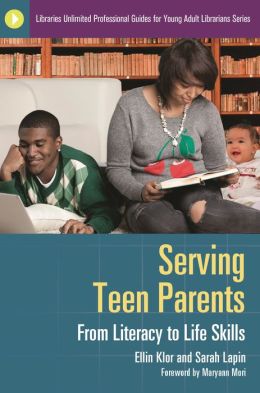 |
Serving Teen Parents: From Literacy to Life Skills Ellin Klor This comprehensive guide successfully shows how libraries can support teen parents and their children. Librarians are shown how to develop, implement, and evaluate services and programs for teen parents and their children. Chapters cite research studies and provide references at the conclusion. A wide variety of topics are covered, well beyond what one may think of when considering services to provide to teen parents. The authors demonstrate what it takes to provide these services, discussing partnerships, planning, training, funding, and more. Most useful, they also include brief overviews of teen parent programs in the United States. Some chapters offer examples of programs that focus just on teens, with matters like literacy skills, financial advice, and job searches, while others outline ideas for both parents and their children, like playing at the library, offering plans for crafts, exercise, leisure, and more. The chapter on interactive literacy programs is invaluable. Here, librarians will find extensive outlines for story times, covering everything from choosing books and songs to reproducible fingerplays and flannelboard patterns. An appendix provides reproducible materials of surveys, handouts, and questionnaires. It is difficult to imagine anything the authors left out of this guide. The many useful models and plans for each piece of the programming make the guide easy to use for libraries just starting to provide these services. Though at times the book is intimidatingly dense, by providing a thorough examination of teenage parents and their lives, the authors give librarians a well-rounded view into the complex needs of this population. 2012, Libraries Unlimited, Ages adult professional, $45. REVIEWER: Amanda MacGregor (VOYA). ISBN: 9781598846935 |
|
Transforming Our Image, Building Our Brand : The Education Advantage Valerie J. Gross Valerie J. Gross, president and CEO of the Howard Country Library System, has put together this resource describing how they increased their value through public support, funding, and community awareness. Never denying that libraries already serve to educate the public, they choose words, titles, and branding to solidify their status away from supporting education and towards being an important education institution; thus, changing words, not actions. Transforming Our Image, Building Our Brand describes this evolution and the “Three Pillar System” they used in implementation. An example is making simple vernacular changes, such as changing “Library Director” to “President and CEO,” or library “programs” to library “classes.” Informative and approachable, this resource offers many suggestions to better help the public understand the role of libraries. This, in turn, helps with funding and more. Gross describes this change as moving from “traditional to strategic,” which is, of course, a way of ensuring continued funding and sustained public access to library resources. Many of the publicity materials and other visual documentation from the Howard Country Library System are included. This book will be a good reference for libraries looking to re-brand, or for tried-and-true modernization–or even just for libraries who want to try some of many re-imaging ideas presented. 2012, Libraries Unlimited, Ages adult professional, $48. REVIEWER: Kristi Sadowski (VOYA). ISBN: 9781598847703 |
|
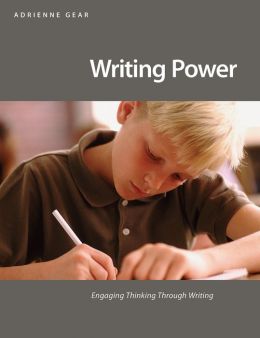 |
Writing Power: Engaging Thinking Through Writing Adrienne Gear I am lucky enough to live in the school district where Adrienne Gear teaches, and to have seen first-hand, from the parental perspective, how her Reading Power workshops and instruction techniques have transformed the way teachers and librarian approach childhood reading. In the same way that Reading Power gave teachers the tools to instruct our children not just in reading but in critical thinking, Writing Power presents a methodology for helping students to understand the integral connection between writer, reader, and text. I tell my university students that the creation of textual meaning has a tripartite structure: the text is an immutable artifact that connects the writer (who brings his or her own world to the text) and the reader (who reads the text through the filter of the world he or she lives in). Gear replicates this message in a way that even the youngest student can understand, when she states that “This book was designed to promote the idea that writers and readers are intimately connected” (12). In Reading Power, this connection gives power to readers, making them part of the creation of meaning in the text; in Writing Power, students see the other side: they are creating a written work with which someone else will engage. They are not just writing something for the teacher to grade, but recording in words their world such that another person can interpret it, issuing to their readers the “an unspoken invitation to think” (12). Writing Power is presented in an eminently usable format each chapter consists of short introductions that deliver the essence of the pedagogy at work, followed by a number of comprehensive yet modifiable examples. Teachers can either follow the set outlines and photocopy pages, or adapt the well-explained ideas to fit their own themes. At the university level, it is expected that instructors help students enhance their critical reading and writing skills. It is remarkable that Adrienne Gear has managed to create a program – Reading Power and Writing Power combined – that delivers this strength of comprehension and communication to our elementary students: children who benefit from Gear’s program are given the tools to live richer, more meaningful lives. Category: Professional Materials. Thematic Links: Reading Power; Non-fiction Reading Power; Teaching Reading; Teaching Writing; Critical Thinking; Creative Writing; Reader-Response Theory. Resource Links Rating: E (Excellent, enduring, everyone should see it!). 2011, Pembroke, Ages adult professional, $24.95. REVIEWER: Karyn Huenemann (Resource Links). ISBN: 9781551382630 |
Professional Learning
 |
Read to learn! Read to be inspired! Read to be a better librarian! READ!
Web links to additional information and activities about professional learning follow these reviews. Contributor: Peg Glisson |
Reviews
|



